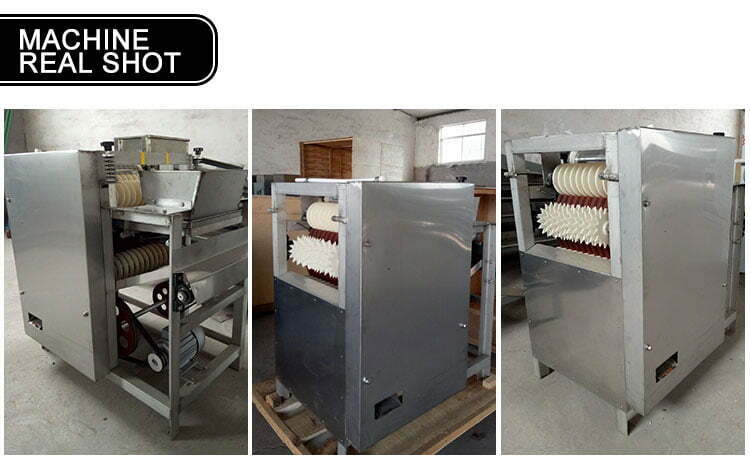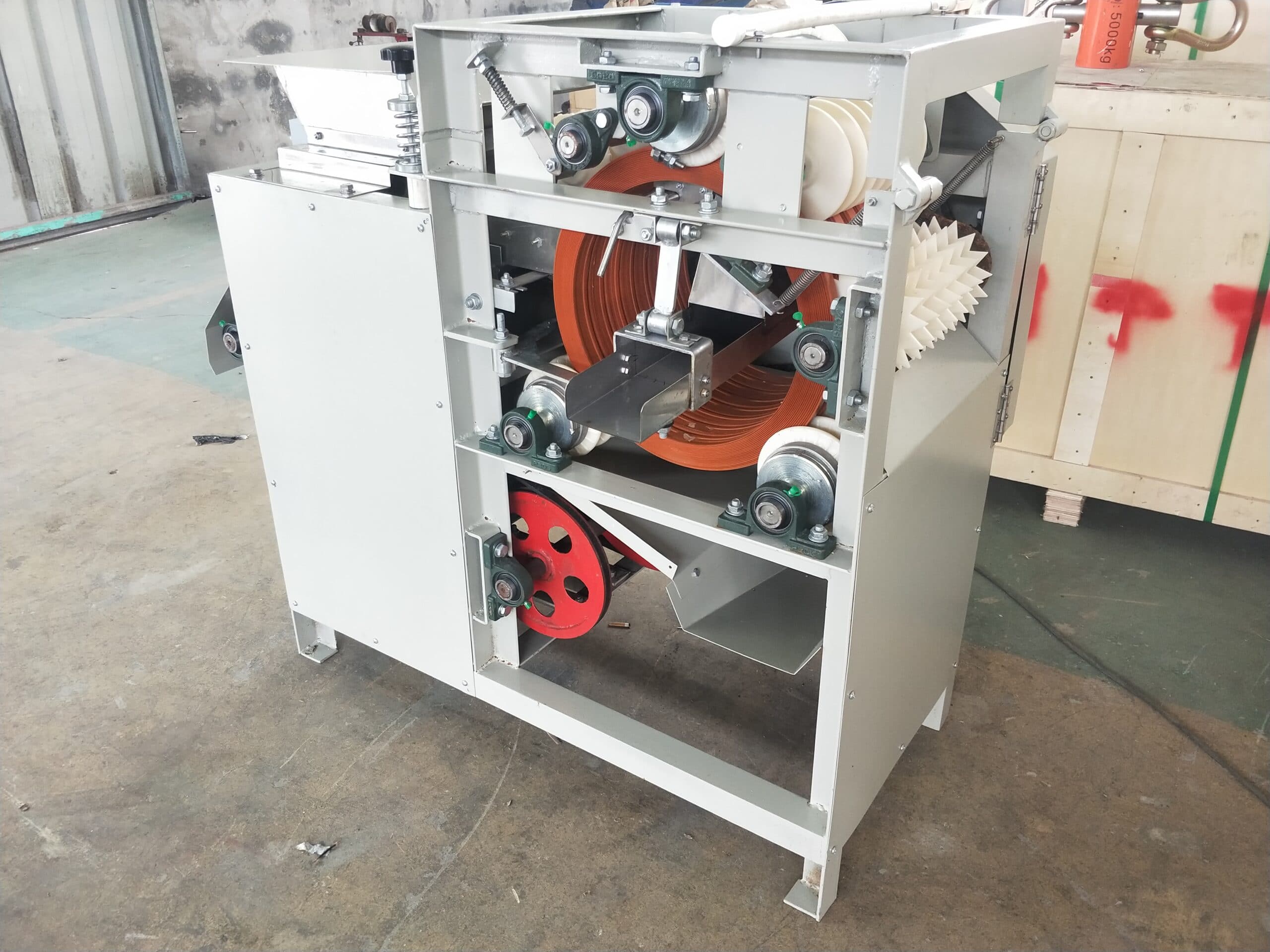A wet peanut peeler, also known as a wet type peanut peeling machine, is a professional machine for removing peanut skins. The groundnut peeling machine is often used to peel peanuts, almonds, broad beans, soybeans, mung beans, and other beans or nuts in the early stage of food and beverage production. The wet peanut peeler machine is easy to use and maintain. When some faults happen during the operation, do you know how to solve them accordingly?

The following are the common faults and solutions of the wet peanut peeler.
| Faults | Possible causes | Solutions |
| I. There are many peanut kernels without peeling in the water receiving bucket | 1. The guide strip is broken or the arc of the guide strip is inconsistent with the rubber wheel 2. Uneven size of raw materials 3. The baffle plates on both sides of the feed screen in contact with the rubber wheel are too low | 1. Replace or adjust the strip 2. Grading raw materials. 3. Replace the baffle plate |
| II. The rate of splitting or breakage of peanut kernel after stripping was higher. | 1. The clearance of the rubber wheel is too small 2. The soaking time of raw materials is too long | 1. Increase the rubber wheel clearance 2. Strictly follow the process flow and soak according to the specified time |
| III. The peanut kernel is thrown out from the outer ring of the rubber wheel | Too much feed | Reduce the feed rate |
| IV. Slow feeding and discharging of discharge hopper or feed screen | 1. Lose fixing device under feed screen 2. The reversing device is broken 3. The damping rubber sleeve is worn too much or too tight | Check, fix, repair, and replace the rubber sleeve |
| V. Low peeling rate | 1. The soaking time is short, the water temperature is too low, and the size of raw materials is uneven 2. The blade is damaged or blocked around the tool holder 3. The feeding wheel is too high (the distance between peanuts and the blade is too high, and the outer skin cannot be cut) 4. The clearance of the discharge wheel is too large or the rubber wheel is seriously worn | 1. Pay attention to the time, adjust the water temperature and select the grade of raw materials according to the standard 2. Replace the blade and clean the impurities around the tool holder and between the rubber wheel 3. Lower the feed wheel or adjust the height of the tool holder (the distance between the fixed screw of the tool holder and the rubber wheel is 4-6mm) 4. Reduce the clearance and replace the new rubber wheel |
| VI. There are more peanut kernels in the peeled skin | The distance between the discharge wheel and the extrusion shaft is too high | Lower the discharge wheel so that it is attached to the extrusion shaft |
| VII. There is too much peel in the peeled peanut kernel | 1. The discharge wheel is too low, causing the extrusion shaft to leave the inner ring of the rubber wheel 2. The leather throwing wheel does not rotate or is damaged 3. After the chain is installed, the leather throwing wheel rotates in the wrong direction | 1. Raise the discharge wheel to keep the extrusion shaft in good contact with the rubber wheel and discharge wheel 2. Adjust and replace the leather throwing wheel 3. Refit the chain |
The above is the faults that users might face in their operation and corresponding solutions. We advise that users read through the operation instructions carefully first and strictly follow the instructions to avoid possible abnormal phenomena.

